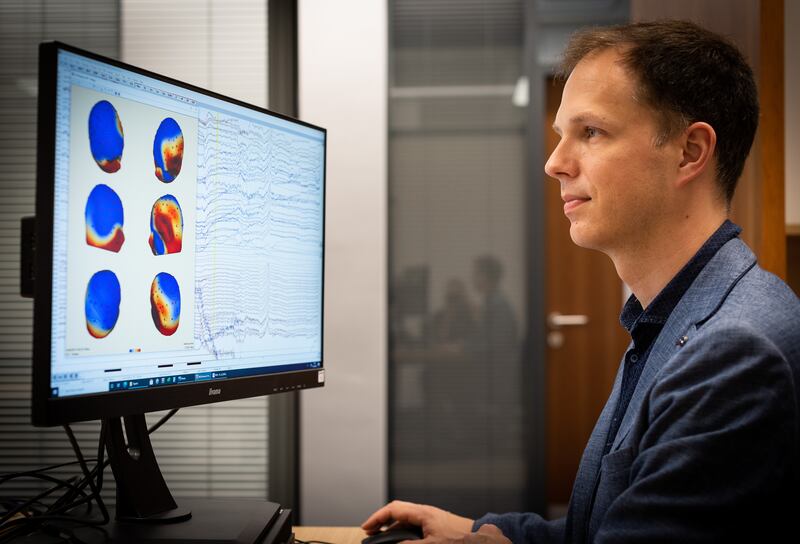A pioneering EEG test could dramatically increase early diagnosis of Alzheimer’s, researchers have announced.
Scientists have developed a two-minute passive-test called Fastball EEG that measures people’s brain waves in response to a series of images, potentially helping diagnose dementia earlier.
Participants look at a series of flashing images on a computer screen while their brain waves are measured using an EEG cap.
Researchers at the University of Bath said the technique was highly effective at picking up small, subtle changes in brain waves that occur when a person remembers an image.
They said it was also passive, meaning the person doing the test did not need to understand the task or respond and may not even be aware of their memory response.
The Fastball EEG system is cheap, portable and relies on pre-existing technology already available in hospitals, the researchers said.
Fastball EEG is now being used in a study on the earliest stages of Alzheimer’s at Southmead Hospital in Bristol.
Alzheimer’s is the underlying cause of approximately 60 per cent of dementia and estimates suggest the disease costs the UK economy around £26 billion a year.
The disease is currently diagnosed using a combination of subjective and objective reports of cognitive decline, often involving memory tests.
The researchers said earlier diagnosis could help with the prescribing of drugs and also allow lifestyle changes to slow progression of the disease.
They hope that Fastball EEG could help lower the age of diagnosis by up to five years.
Lead researcher and cognitive neuroscientist Dr George Stothart said: “Fastball offers a genuinely novel way of measuring how our brain is functioning.
“The person being assessed doesn’t need to understand the test, or even respond - they simply watch a screen of flashing images and by the way we manipulate the images that appear, we can learn an enormous amount about what their brain is, or is not, able to do.
The tests currently used to diagnose Alzheimer’s miss the first 20 years of the disease, Dr Stothart said.
“For decades now, we have had tools in scientific research that have been able to probe how the brain is working, but we have never made the leap to a viable clinical tool for the objective assessment of cognition. We hope that Fastball may be that leap,” he said.
“We are at a really exciting stage in its development.
“We are testing the tool in earlier and earlier stages of Alzheimer’s and expanding the type of brain function it can measure to include language and visual processing.
The tool will help scientists understand Alzheimer’s as well as many other less common forms of dementia.
“Ultimately, the holy grail of a tool like this would be a dementia-screening tool used in middle age for everyone, regardless of symptoms, in the same way we test for high blood pressure,” Dr Stothart said.
“We are a long way from that, but this is a step towards that goal.”
The research was funded by Alzheimer’s charity BRACE.
The paper, A Passive and Objective Measure Of Recognition Memory In Alzheimer’s disease Using Fastball Memory Assessment, has been published in the journal Brain.







